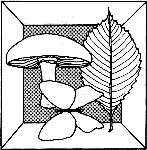How To Collect And Prepare Forest Insect And Disease Organisms And Plant Specimens For Identification
|
William H. Hoffard – Entomologist, Asheville, N.C., Field Office,
Robert L. Anderson – Pathologist, Asheville, N.C., Field Office, and
William H. Sites – Pathologist, Asheville, N.C., Field Office.
USDA Forest Service, Southeastern Area, State and Private Forestry, 1720 Peachtree Road, N.W., Atlanta, Ga. 30309.
|
|
Forest insect and disease specimens often must be sent to distant locations for identification. Almost invariably, poorly prepared or badly packaged specimens arrive damaged-often to the point that identification is impossible. You can avoid the disappointment of a notice asking you for another specimen (which you may not be able to get) by using this guide to collect, prepare and ship your specimens.
Specimen preservation, packaging and shipping is simple, but requires care. Techniques vary among different kinds of insects and disease samples. The recommendations in this guide apply to most types of specimens, or to techniques which can be generally applied to them all. For a more thorough discussion, consult the list of suggested readings.
[ Contents ]
[ Next ]
[ Home ]
|



